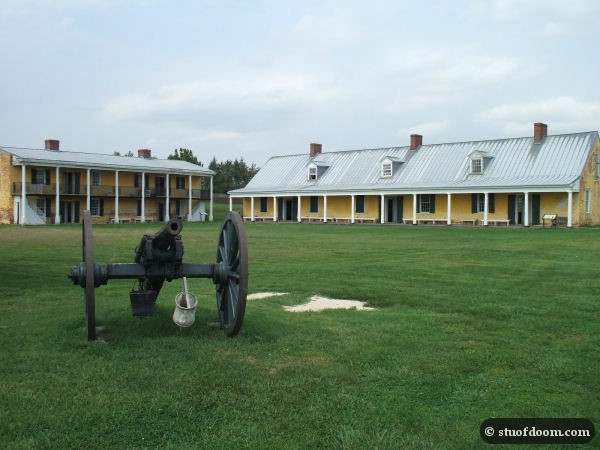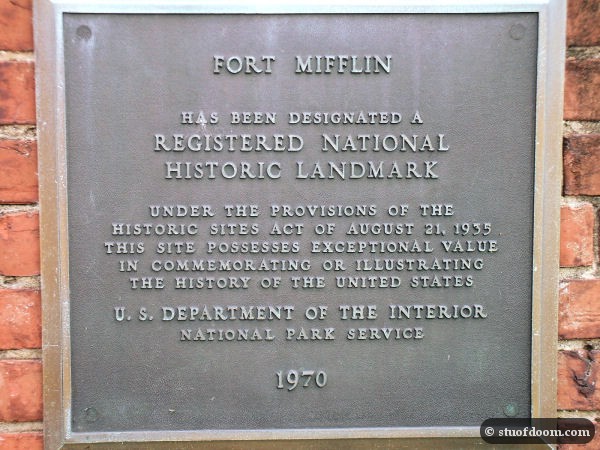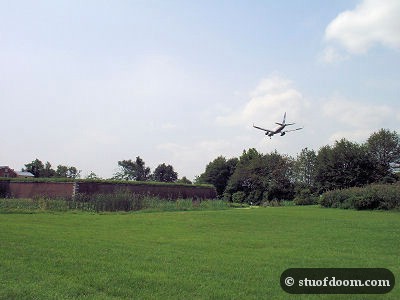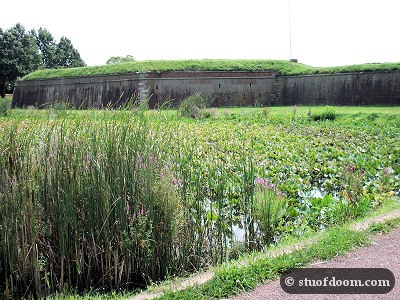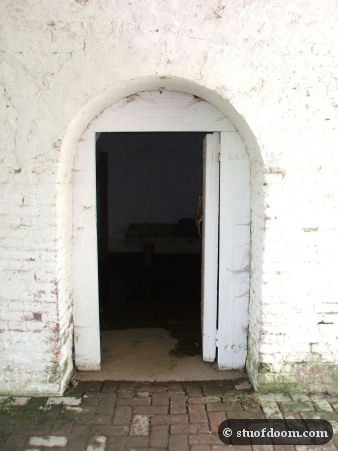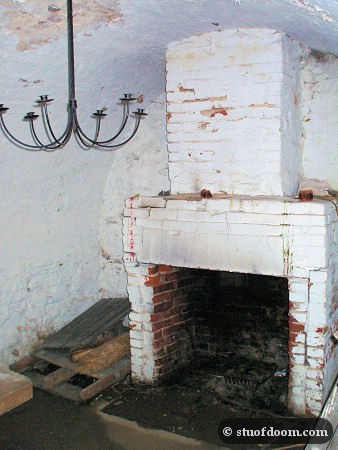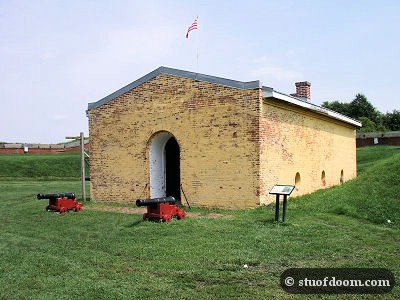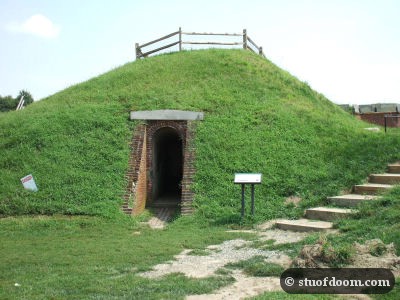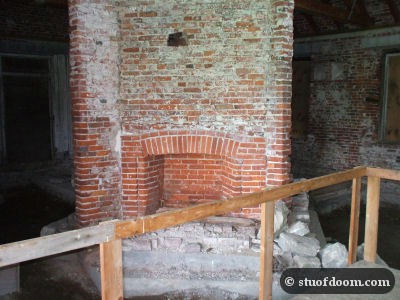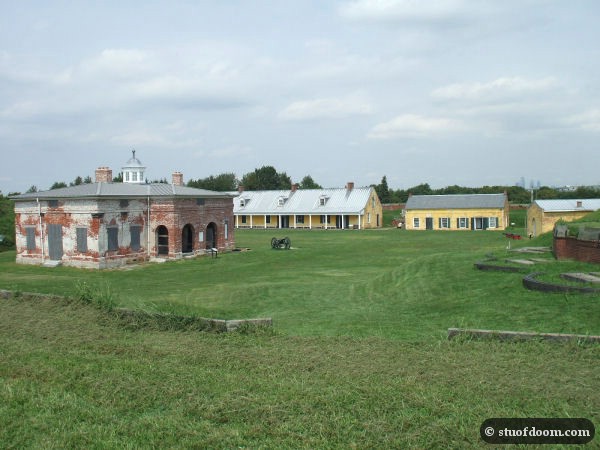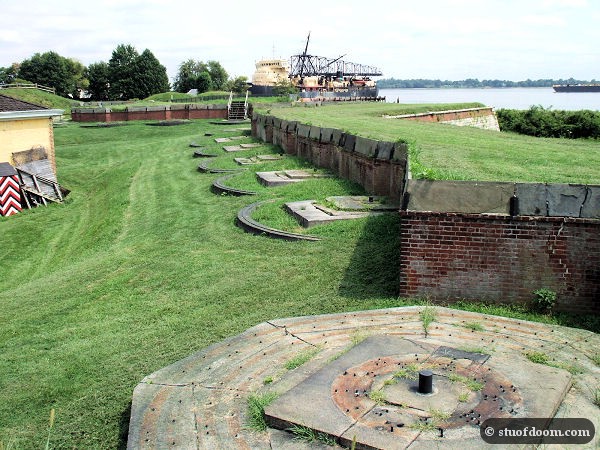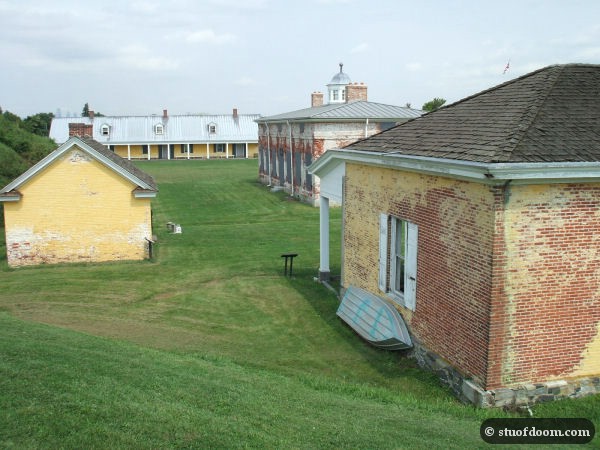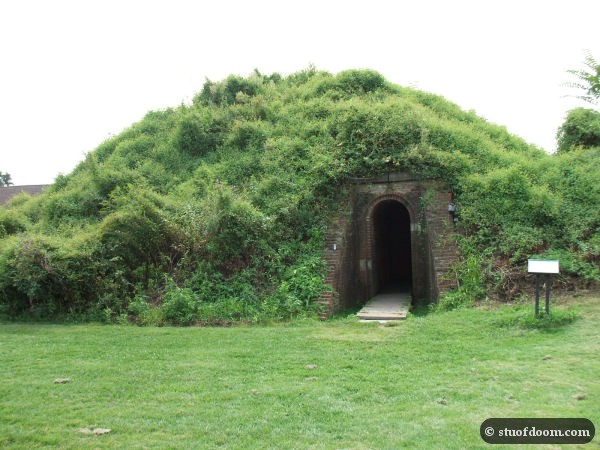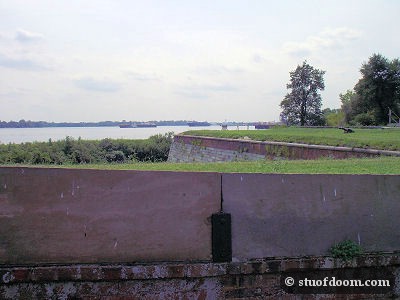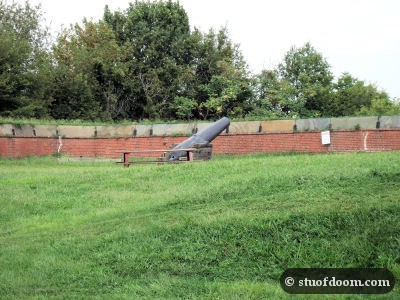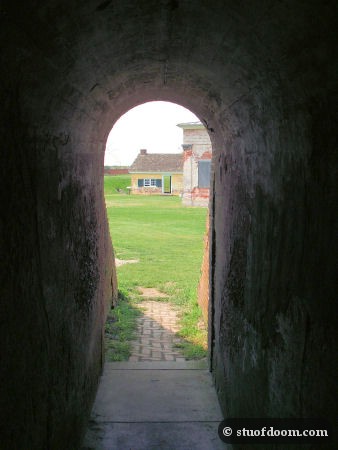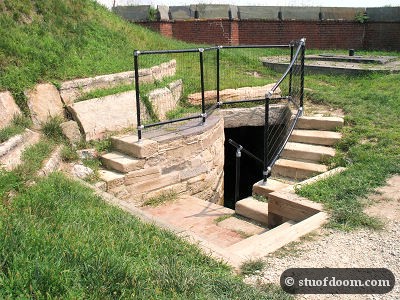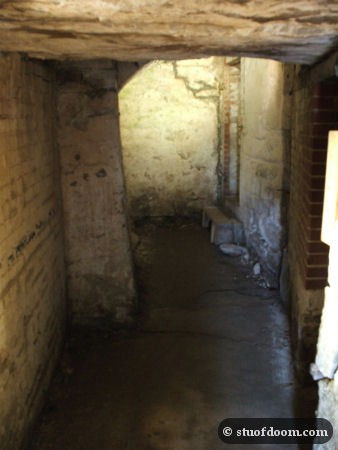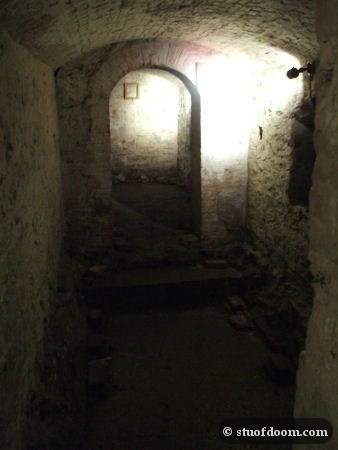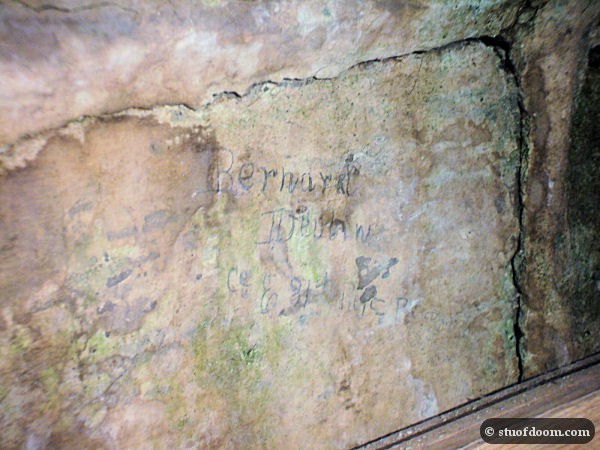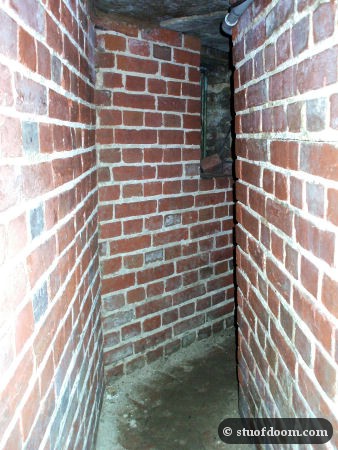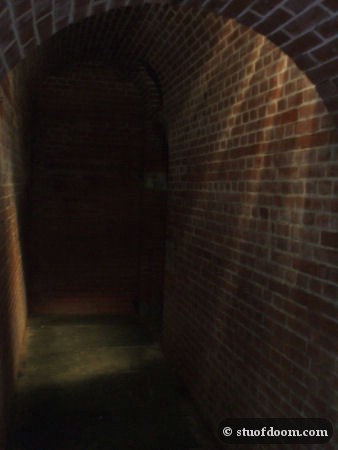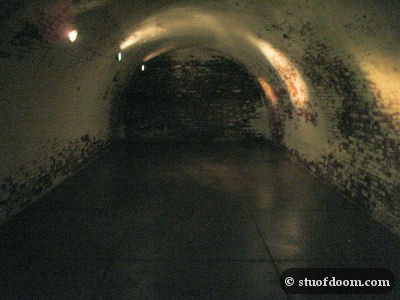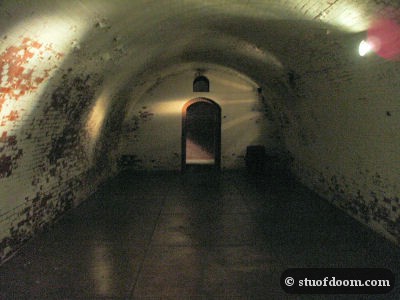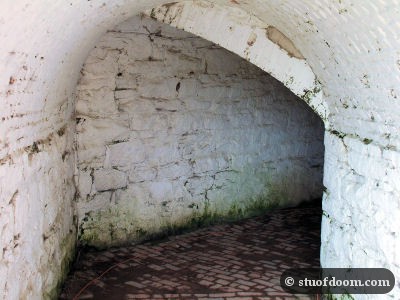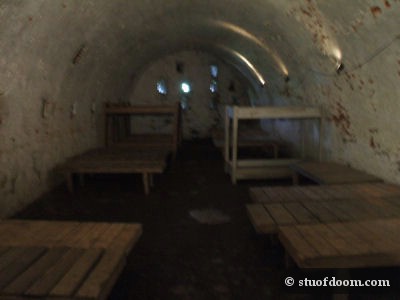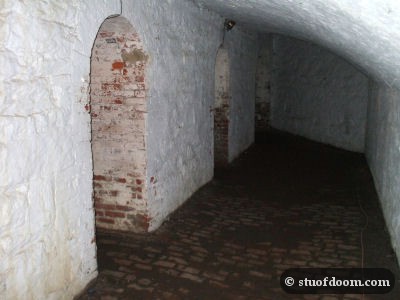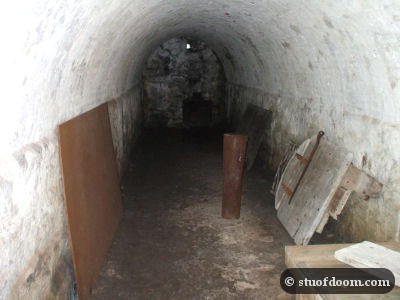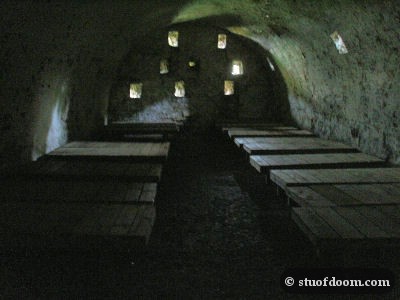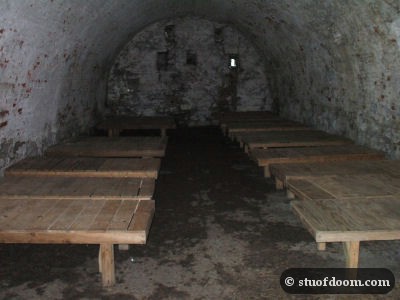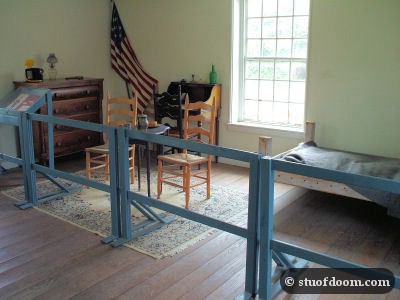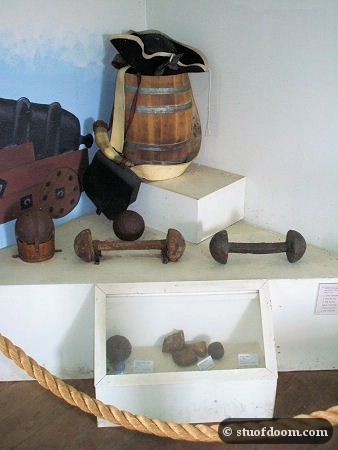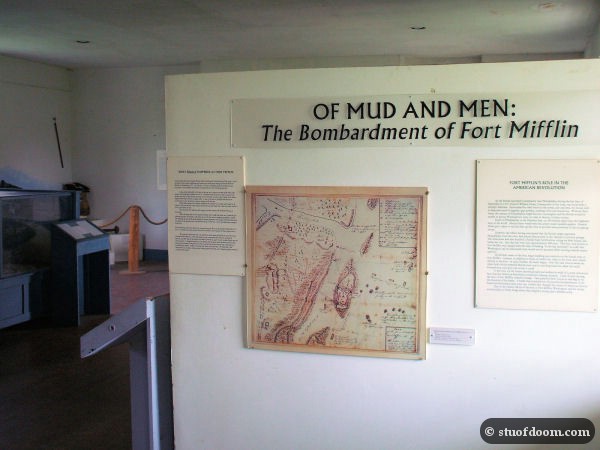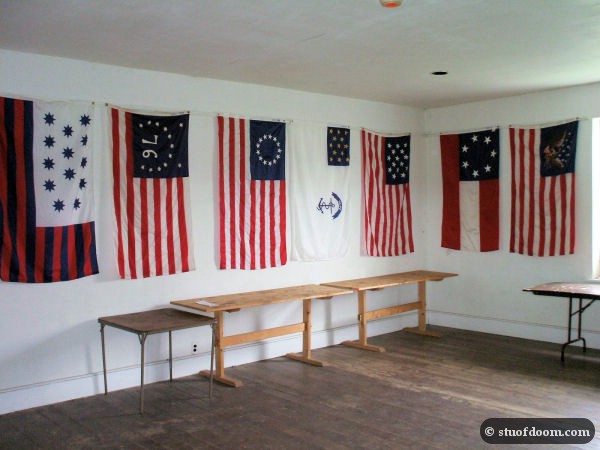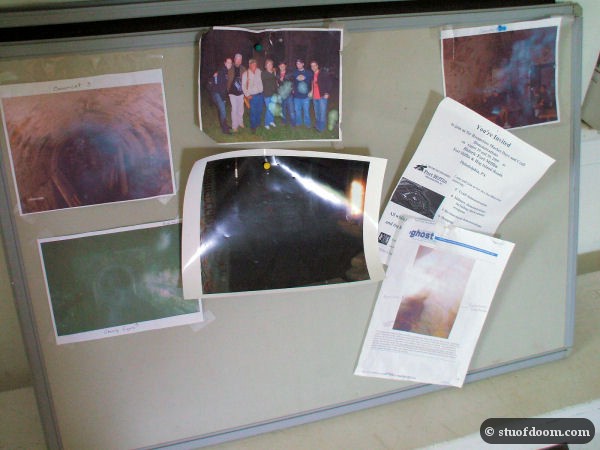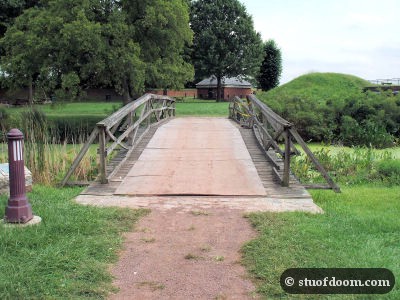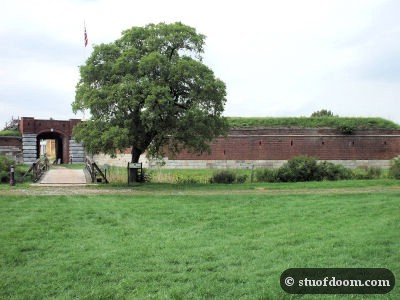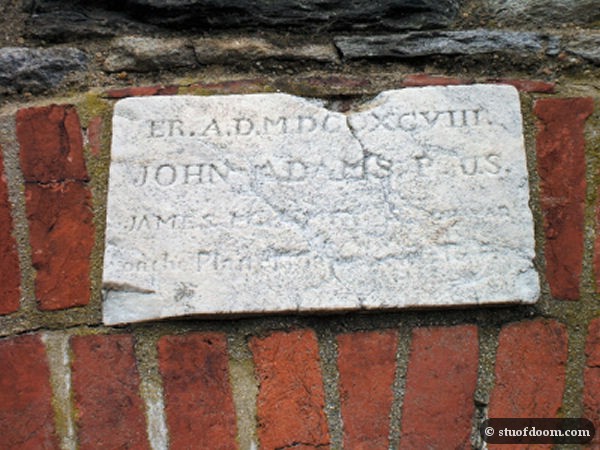Fort Mifflin is a unique and, sadly, little known point of interest in Philadelphia. It’s right on the Delaware River; it’s actually next to the Philly Airport. It is a bit of a pain to find, though. You’re definitely going to want to look this one up first. There is also a small admission fee; well worth it though.
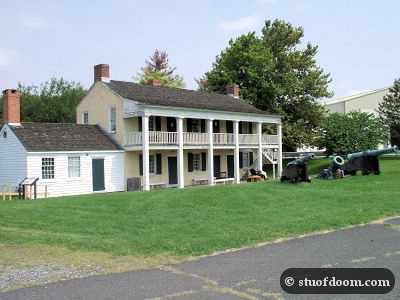
The fort’s former hospital, now the ticket & info office.
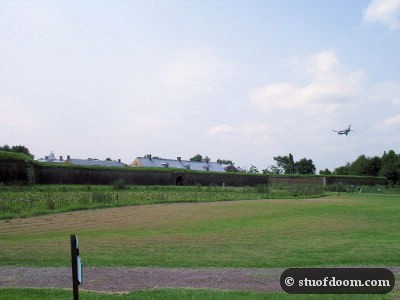
Outside the fort’s wall. Notice the plane coming in.
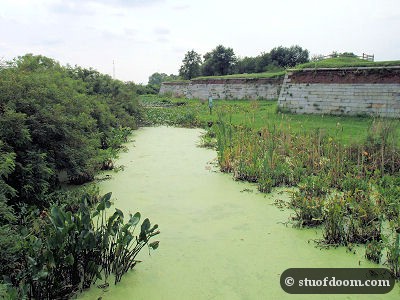
All around the fort’s perimeter is very swampy, hence the area’s name of Mud Island.
The fort was built in 1771 and was used by the military up until 1952. It served some purpose for every war within that time span. Although there are several, the two big reasons this fort is so famous come from the Revolutionary and Civil Wars.
During the Revolution, the British invaded and ultimately captured the city of Philadelphia in 1777. General Washington used Fort Mifflin as a distraction and ordered it manned until the very last possible moment of escape. He knew he was outnumbered and under-supplied; fighting full force in Philly would have been suicide. For five weeks, the British pounded Mifflin, with many of its buildings being reduced to rubble. The fort’s official website states “It is the site of the largest bombardment the North American continent has ever witnessed.” Holding Mifflin allowed Washington’s army to escape and flee to Valley Forge; it’s almost certain that if the fort fell sooner, the Revolution would have been much shorter with very different results.
During the Civil War, the fortress was used as a prison for captured Confederates, so it’s no surprise there are ghost stories surrounding the place. The most famous involves the hanging of William Howe, a Union deserter convicted of murder. He was held in what is known as Casemate #11. His signature can still be seen on the wall inside. He’s said to still haunt the fort, especially the casemate. When I went, there were actually 2 ghost hunters trying to record voices inside the casemate.
There are, of course, many other supposed ghosts haunting the place.
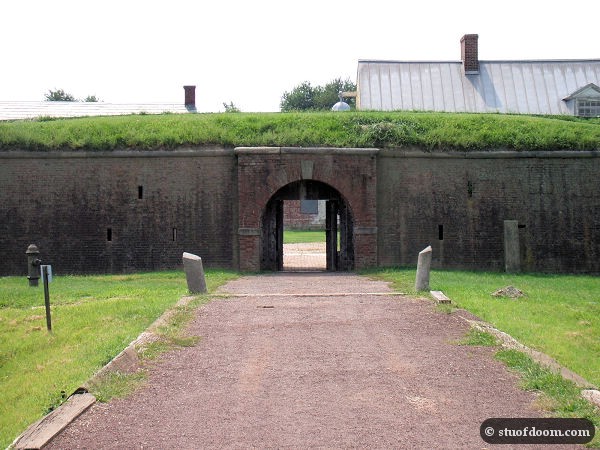
Finally heading through the gate…
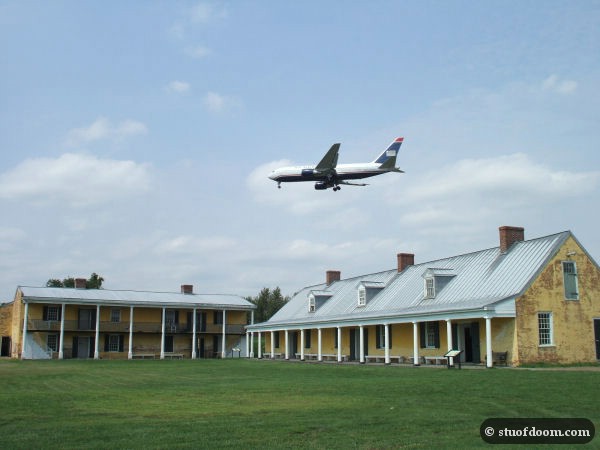
Officers’ Quarters & Soldiers’ Barracks
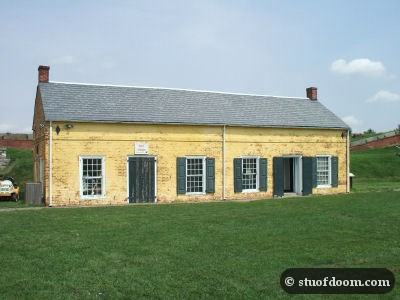
Quartermaster’s store. Now a gift shop. Closed when I went. I really wanted a magnet :/
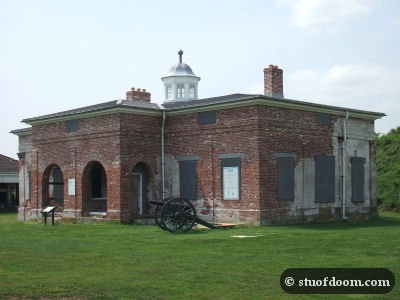
Commandant’s House. The inside was being restored during my visit…
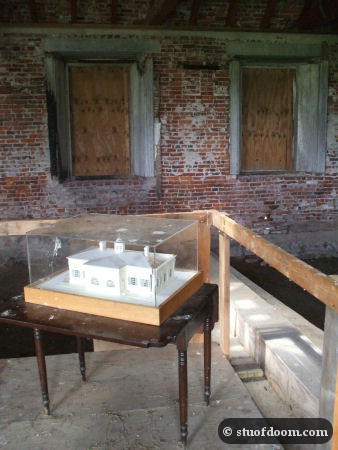
Guessing that’s what the place’ll look like after renovation…
Some more outside shots before heading underground to infamous Casemate 11…
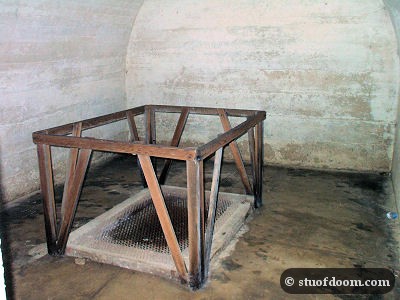
End of the casemate. Imagine this as your prison cell.
Lots of places on the grounds where you can go underground…
Like I mentioned earlier, the fort served as a prison during the Civil War. Mister Howe may have gotten special treatment and had his own casemate, but that wasn’t the case for the Confederate prisoners. 6 casemates were used as prison cells.
The barracks and officers’ buildings serve as a museum, with artifacts, models, and even a small display of photos of TV’s Ghosthunters when they came to visit the fort.
For admission, hours, directions, and all that jazz, check out Fort Mifflin’s official site.
